The route of the 2024 Critérium du Dauphiné route has been unveiled and here is a closer look at the course including a tough “new” climb. The race will take place from Sunday 2 June to Sunday 8 June.
Stage 1

100% Saint-Pourçain as the stage starts and finish in the town of Saint-Pourçain-sur-Sioule and has a finishing loop. A flurry of early climbs means some will target the breakaway hoping to take the mountains jersey and if only for day it’s a prize and a photo opportunity. A likely sprint finish although note there’s 2,000m of vertical gain and how many sprinters will start given the stages to come?
Stage 2
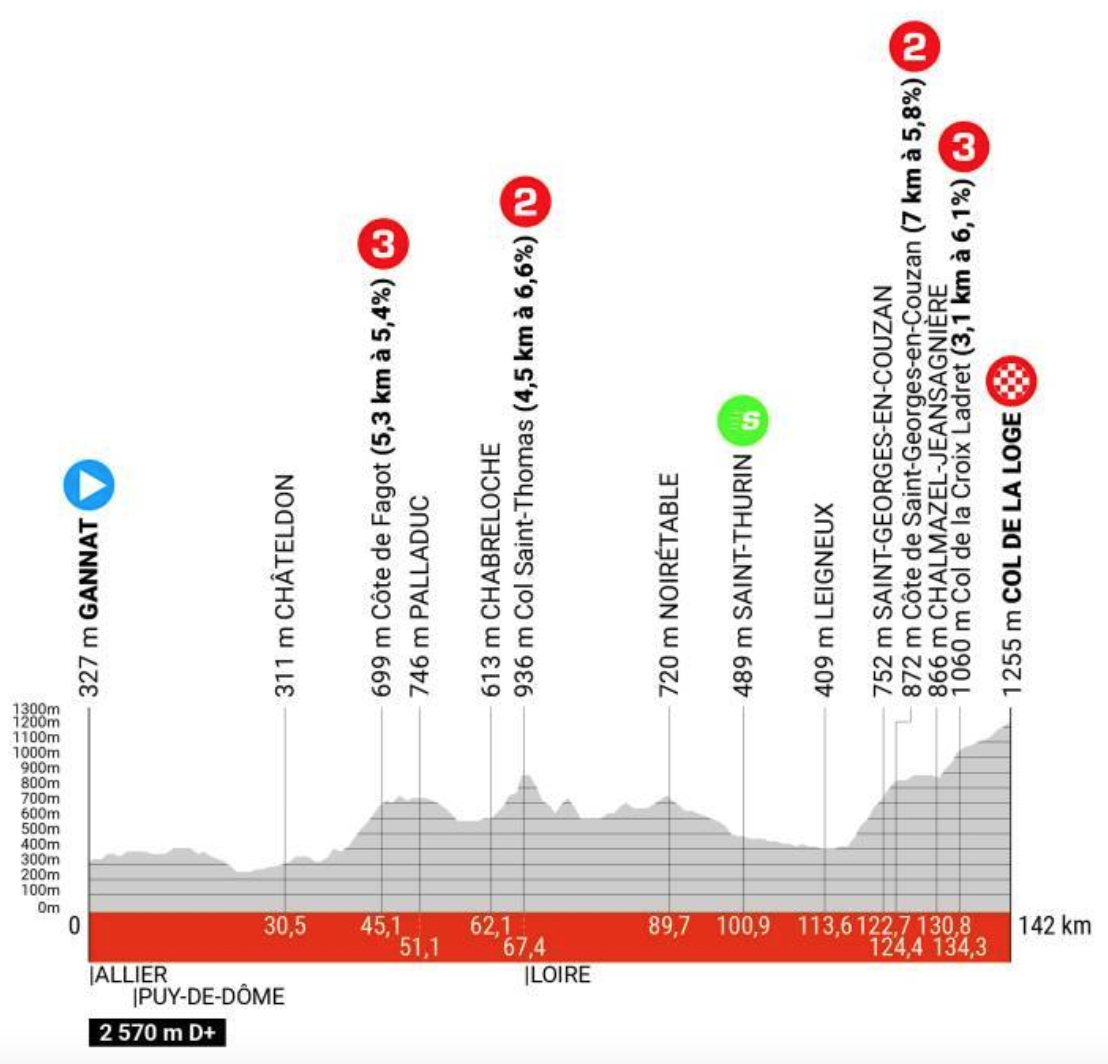
A dash around Romain Bardet’s training roads. The Col de Saint-Thomas midway is harder than the stats suggest with a final kilometre at 12% but it’s hardly going to turn the race upside down. A summit finish? The Col de la Loge ticks lots of boxes as it’s at a mountain pass, it’s over 1,000m high, the upper part is flanked by pine trees, there’s a ski station at the top and yet the missing ingredient is a tough gradient. It’s a scenic road all the way up from the Loire valley floor but never that steep and while the profile doesn’t show it there are some flat sections after the Croix de Ladret and it flattens out again right at the finish. It makes for a hard final 30km that no heavyset sprinter can cope with but it’s for strong riders who can surf slipstreams and bully the big ring.
Stage 3

Another stage, another day with plenty of vertical gain, another tricky climb mid-stage before a big ring drag to the line in the shadow of Mont d’Alambre, an extinct volcano cone. It’s a breakaway day given the uphill start and the following day’s time trial means the GC contenders will try to ride in economy mode.
Stage 4
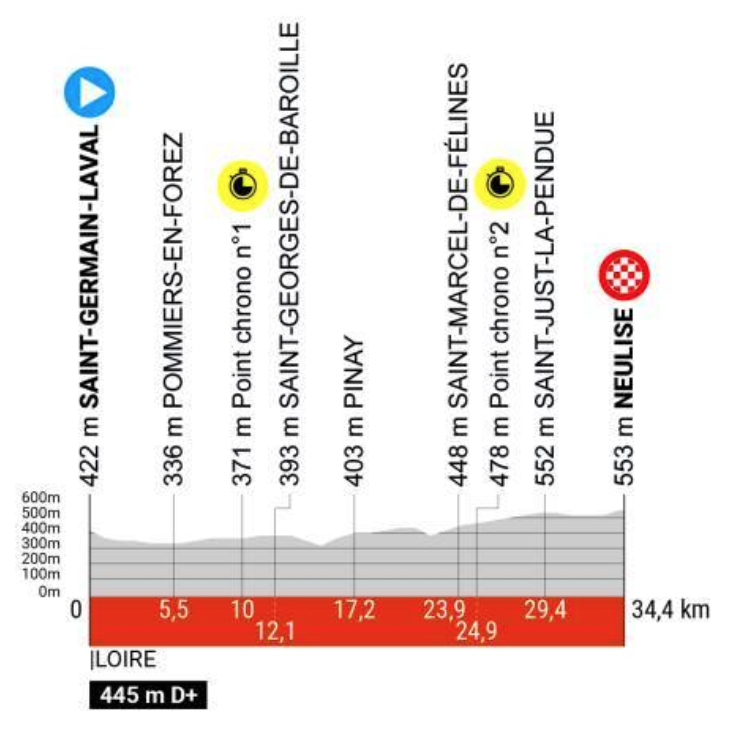
A bit of déjà-vu as this 34km stage borrows roads from last year’s Dauphiné. Talking of 2023, that year’s edition had a hard time trial stage, this one here is on more gentle rolling roads as it crosses the Loire – France’s longest river – before a drag up to the finish.
Stage 5
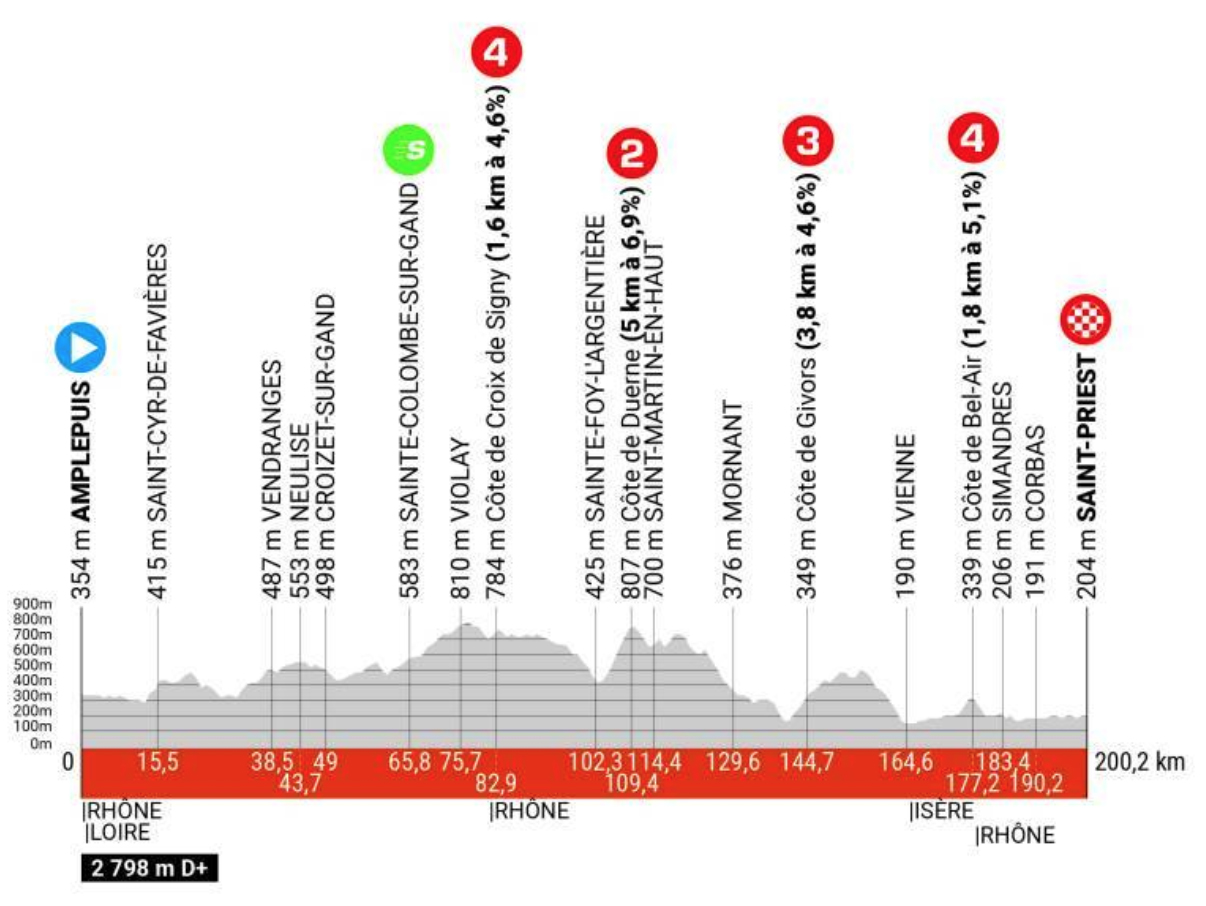
200km and maybe a sprint stage but there’s 2,800m of vertical gain and even in the Vuelta that’d be a lot for the sprinters and the lumpy terrain could offer attackers a chance.
Stage 6

The first Alpine stage and in the backyard of the Decathlon-Ag2r La Mondiale team’s HQ. There’s a dash across to the Col du Granier, climbed “sideways” as in west to east rather than the usual approach in the north-south axis of the Chartreuse trilogy. Then comes the Collet d’Allevard, a ski station summit finish meaning a regular, engineered road but it’s steeper than usual for the French Alps and selective. It was last used in 2011 when Joaquim “Purito” Rodriguez won.
Stage 7 – (updated 28 May)

The planned Aravis-Colombière climbs have been skipped because of roadworks. The route change means a flatter first half of the stage. The “Côte d’Arâches” is the scenic cliff climbing road on the way to the Flaine ski resort before taking a balcony road across. Instead of the Colombière in comes the Ramaz, a tough climb closer to the end of the stage.
The finish is a “new” climb, the town of Samoëns is better know as the start of the dreaded Joux-Plane but instead of going north, here it’s south and up a tough road to a ski station; this climb is often known as the Plateau des Saix and it’s a tough climb, forums abound with adjectives like “terrible”, “wild”, “infernal” and some locals say it’s harder than the Joux-Plane.
Stage 8
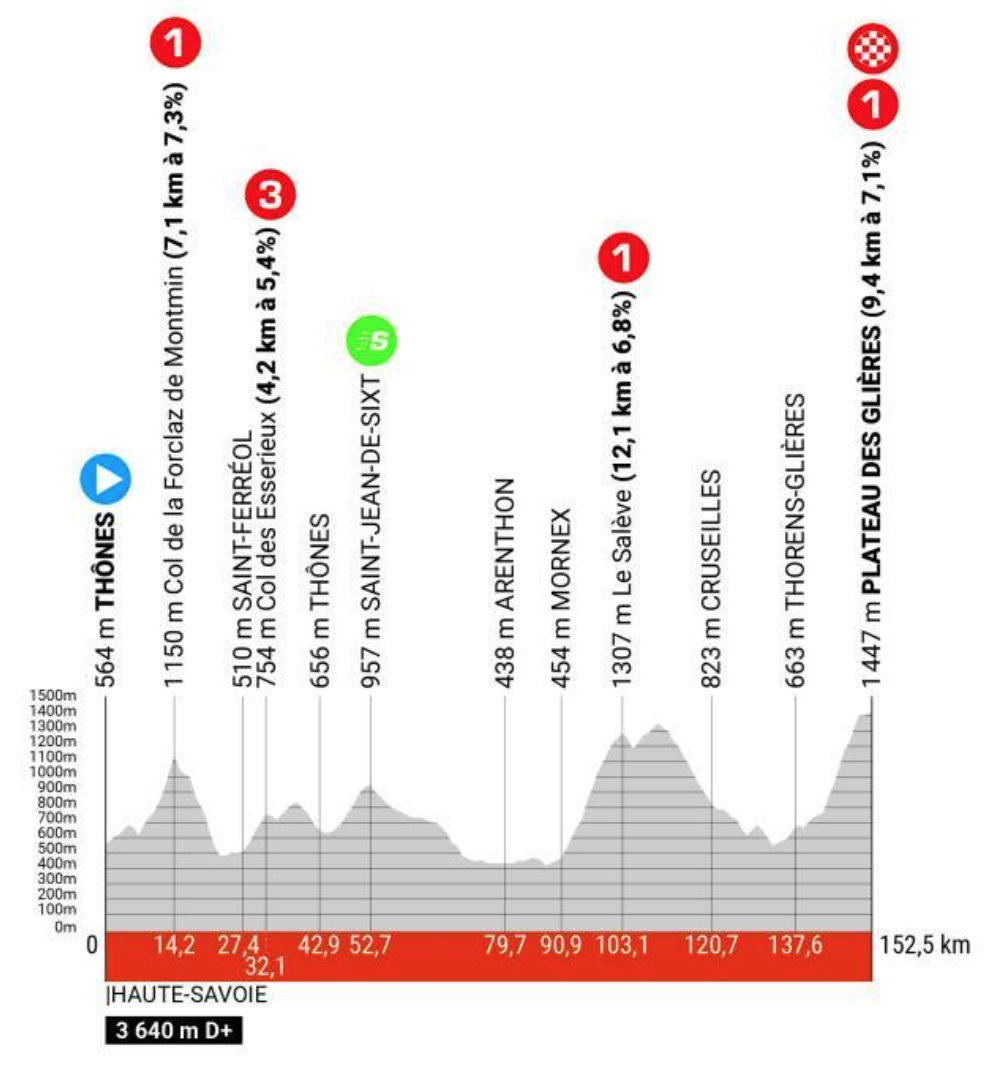
A stage that starts with a loop via steep Forclaz de Montmin before a more gentle middle section that could have had some more small climbs to make lifer harder for a chasing peloton before the Salève climb that is more irregular and selective than it looks. Then it’s across to the final climb up to the Plateau de Glières. The plateau has featured in recent Tours de France as a gravel road and climbed from another direction, this is the Col du Collet tackled from the south-west – the same as 2013 when Julian Alaphilippe won the final stage of the Tour de l’Avenir – and it’s steep with plenty of 10-12% slopes before a descent which flattens the official gradient number and then a sharp rise to the finish on gravel, tailor-made for Primož Roglič.
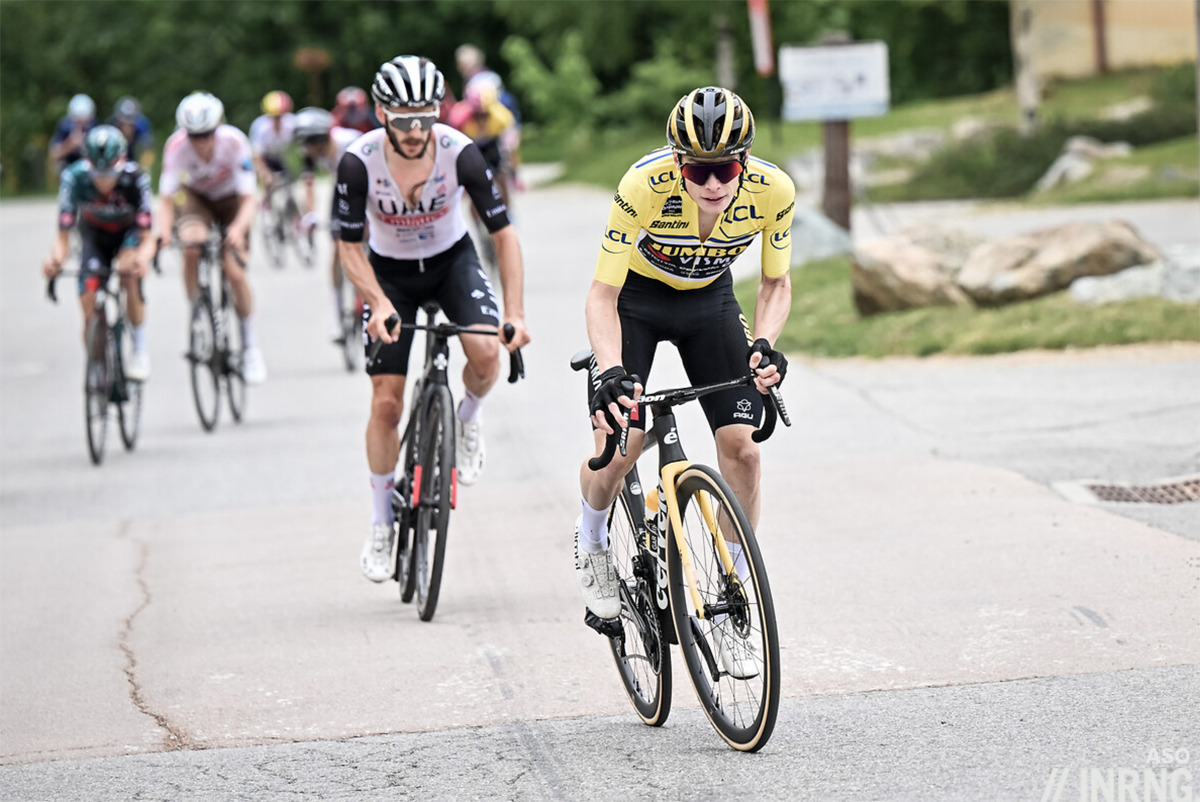
The Verdict
It’s again very much a tour of the Auvergne-Rhone-Alpes region rather than the Dauphiné but we’re used to that now. After the obligatory Auvergne stages, the 34km time trial is interesting given Remco Evenepoel is riding, this is the stage for him and if he does win, sets up a test for his Soudal-Quicksteppers in the mountains as rivals like Jonas Vingegaard and Primož Roglič will be only to happy to see their teams dismantle the Belgian squad as they aim for victory.
There’s a “new” climb in the Plateau des Saix and it’s reputed to be very tough, it could be decisive and it’s interesting for the novelty but also to see if it features in the Tour de France in the coming years. Often where the Dauphiné goes the Tour follows but what’s striking is how the race visits some very small places, not just along the way but as the start and finish towns like Celles-sur-Durolle, population 1,647 or Neulise population 1,324 and that’s just two examples. It does have a start in Alberville and passes through Vienne but this is quite a discreet race, it’d be a pity if the towns within this region aren’t jostling to host the race.
There won’t be any doubt about the winner given the course, a long TT (for this era) and three tough summit finishes and it should set things up nicely for the Tour weeks later.

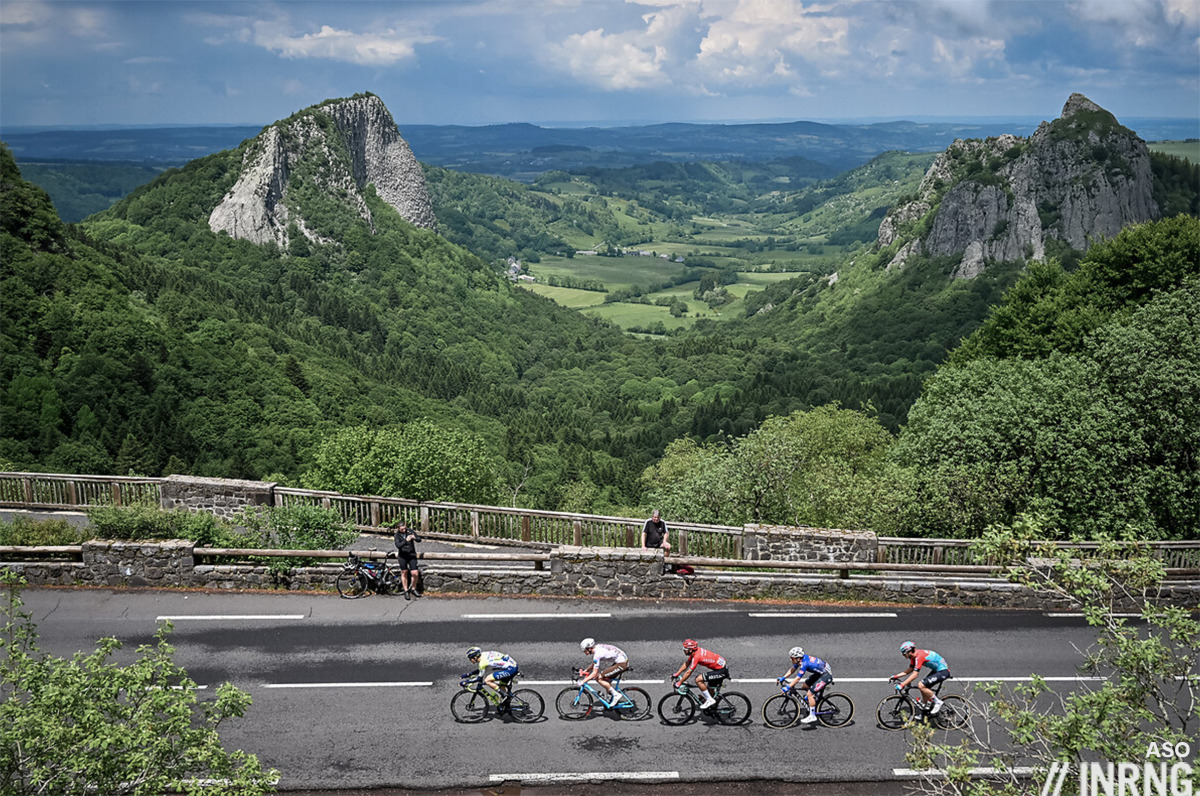
I like it when the small town are given a little bit of sunshine… Maybe better to be hosted by a small town who waits for you as the big thing of the year than a big city that doesn’t care.
We often see towns hosting the Dauphiné or another race as a test before the Tour the following year or soon after but some of these places are so small it’d be hard to imagine them hosting the Tour, the race might not fit. It might make for a more relaxed Dauphiné though, easier access for teams, the media etc.
Cent Percent Saint-Pourçain – another beauty, Monsieur Anneau!
For the rest of us: “Saint-Pourçain is an Appellation d’origine contrôlée (AOC) for wine located around Saint-Pourçain-sur-Sioule in the Auvergne region of France.”
Glad someone got it JB, and yes it’s a wine producing area but small one, it’s probably not easy to find a bottle outside of the region.
Saint-Pourçain’s the sort of place that if Paris-Nice visits on a grey day in March it vibes rural exodus and a place that’s seen better days; when the Dauphiné arrives on a sunny day in June it’s all decorated with flowers, tree-lined boulevards and charming.
Actually it’s rather cheap wine, so you can often find a bottle of Saint-Pourçain in the supermarkets, even in Burgondy where I live. In my memory it’s not a great wine, rather tongue-scratching… but surely you can find some better there, going directly to the vigneron. Anyway it’s an old old region of wine making, from the Middle-Age where the wine was much more renowned and part of the King’s table.
« Por ce nommés sui Saint-Porçain
Car je sui saint, bon, cler et sain. », say an old poem : “That’s why I’m named Saint Pourçain, because I’m saint, good, clear and sane.”
Done the Joux Plane on holiday and pretty sure I remember signs for Samoens 1600. Kicking myself for not trying it. How come it’s not been used before?
I suppose the Joux-Plane’s been the obvious choice for years but also because it’s not a dead end, a race could do the climb and then either finish down the other side in Morzine or continue and climb up to Avoriaz, both places willing to bid for the Tour and supply hotels.
Samoens 1600 / Plateau des Saix is a dead end… but probably on the route deliberately to encourage visitors with bikes to give it a try as well rather than crossing over to Morzine. Looks like a nice climb though, quiet because it doesn’t go anywhere and with some scenery.
The climb to Samoëns 1600 is a real beast. Definitely tougher than the Joux Plane – there are some infernally steep, long sections. It does ease a little getting towards the top but it should make for a great finish. What can make the Joux Plane so hard is that it is south facing so you get cooked if you ride it towards the middle of the day.
in fact, just checked strava and there is a 3.5k stretch at over 10% – I always go very slowly there (not through choice!)
Thanks, it does sound hard but the Joux-Plane is mysteriously hard, as if some kind of weird optical illusion where it doesn’t look steep but is. But hard in real numbers too, 10km at 9% with 8km at almost 10%, that’s a lot.
The Dauphiné has used the nearby Plateau de Solaison twice and that’s been a discovery, also very steep https://inrng.com/2017/06/roads-to-ride-plateau-de-solaison/
The Samoens 1600 / Plateau des Saix climb is indeed horrible. Harder than the Joux Plane as others have said. I did four or five years back. The road surface was terrible (hopefully better now) and it had some extended steep sections.
It was rather an anticlimax. The climb itself offered very little in terms of view and the resort at the top was pretty ugly and run down (other than the curiously sited new club med hotel that has opened up there). So ugly in fact is made the nearby Avoriaz look like an architectural wonder.
I remember plenty of climbs like those in France. The guy we used to work for ran a French Alp tour every year and he’d mix things up for regular clients and to feature routes LeTour made (kind of) famous. There were more-than-a-few we’d ride (or drive a support van) up and marvel at how ugly things were…and quite often there was a Club Med up there. One was called Flaine I think?
Similar situation with his Italian mountain itineraries if he’d take us to Livigno….yuck!
Flaine is indeed a v ugly town – one of those purpose built ski resorts made entirely out of concrete. Flaine’s ski area is actually linked to Samoens, on the other side of the same massif – there must have been some heavy investment in that area at some point in the past (60s/70s?) and a lack of architects!!
Speaking of Flaine, it’s a little surprising that the road that leads to the town – the Col de Pierre Carree – hasn’t been used in Le Tour (maybe it’s been used in other races like the Dauphine?)…it’s not the steepest, but at 21km with an average of 6.5% (including a small descent halfway up) it’s a big old slog, and bakes in the afternoon sun…
Flaine is actually known for its architecture, it’s just that it is brutal and modernist… https://www.dezeen.com/2016/03/06/flaine-ski-resort-marcel-breuer-brutalist-alastair-philip-wiper-photography-essay/
The Tour de l’Avenir has used the climb but not all the way to the Pierre Carrée/Flaine, just to Les Carroz, a ski village halfway up… probably because that was plenty each time in 2014 and 2016. The Dauphiné looks like it will use the first quarter of the this climb, the steepest part (but have to check the official full route when that’s out later).
Thanks for the preview!
We all know Remco’s TT abilities, but this looks like a chance for the others to seriously dent his hopes in the Tour. If all three (Vingegaard, Roglic and Remco) finish within a minute of each other, then QS should be very satisfied.
He’s reset his ambitions for the Tour with “top 5” talk but we’ll see from the Dauphiné how he’s climbing, especially on the longer ascents and for three consecutive days.
I like the course but I miss a mountain stage with some serious distance.
The climb to samoëns 1600 is possibly the least attractive of the Samoëns climbs, the road is quite wide, made for ski traffic, so-so surface, average views. The various climbs to Joux-plane are better (there are 3-4 variants) , charming small roads, great views, or the dead end to Rosière, or the Fer-à-cheval above Sixt (not much of a climb but the horseshoe setting very pretty), or the small road to the top of Moreillon cable car (start past Moreillon at l’Etelley, on a tiny farming road, then descend on the main road to Moreillon).
Thanks, with readers knowing more about it… feeling compelled to recon the climb now 😉
These tips can help make for a proper day’s ride.
I’d happily settle for some of these “ugly” Alpine climbs with brutalist architecture as one of my training routes. Would make a change from the UK suburbs and b-roads!